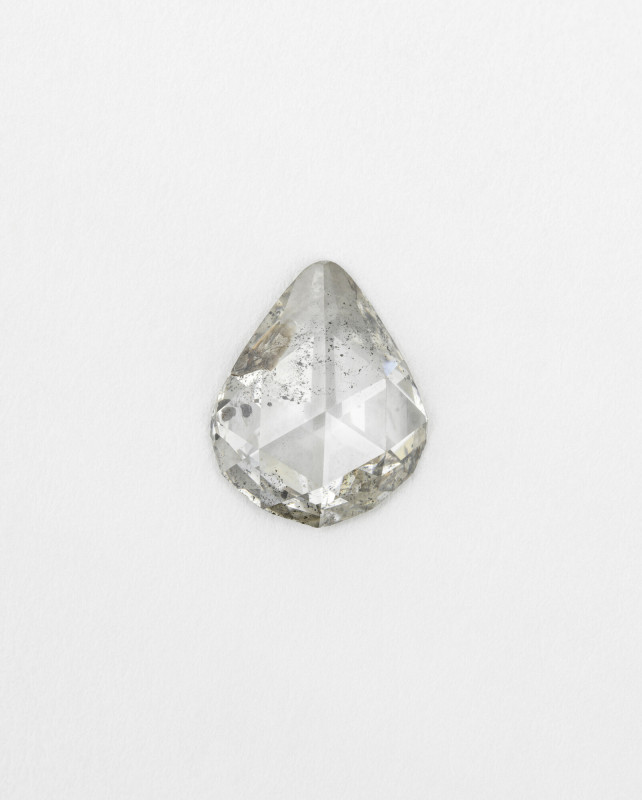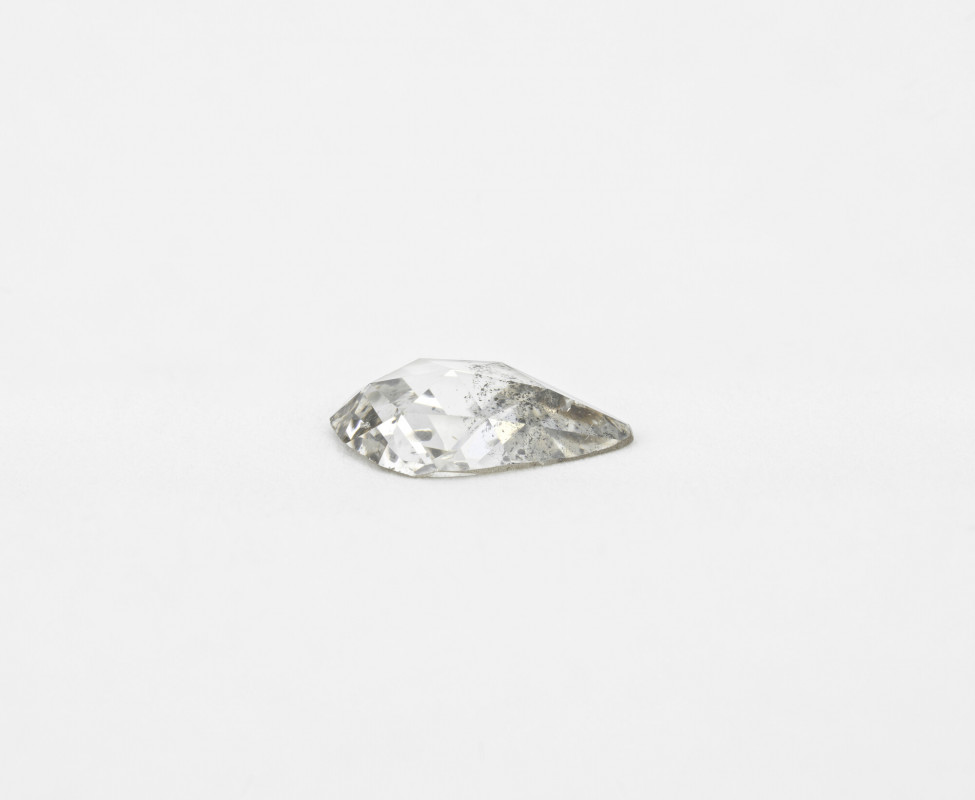Pear-shaped rose cut diamond
1700
The pear-shaped rose cut diamond shows two concentric rows of facets: the lower row to the bottom of the stone and the upper row meeting in a point. This reflects a six-part symmetry modified to two-part symmetry at the pointed end, which is blunt. The height of the stone is 28,7%, compared to the width. The back of the diamond is flat. Naturals occur at the girdle and at the back. At the round part of the pear shape, the girdle is knife sharp and practically non-existent. These properties are very similar to those of the so-called Naville cut ('a full rose cut with a peculier shape') with a flat back wich existed as early as the end of the 16th century. Full rose cut diamonds, which were produced in the 17th century, tended to be rather flat. With a height of 28,7% this diamond is indeed flat. Higher rose cuts were only produced in the 18th century, of which manys where refashioned into brilliants in the 19th century. Hence, there are no arguments to date the cutting of this diamond any much later than the 17th century.
Notice: Do you see a mistake? Or do you have extra information about this object? Please let us know!



